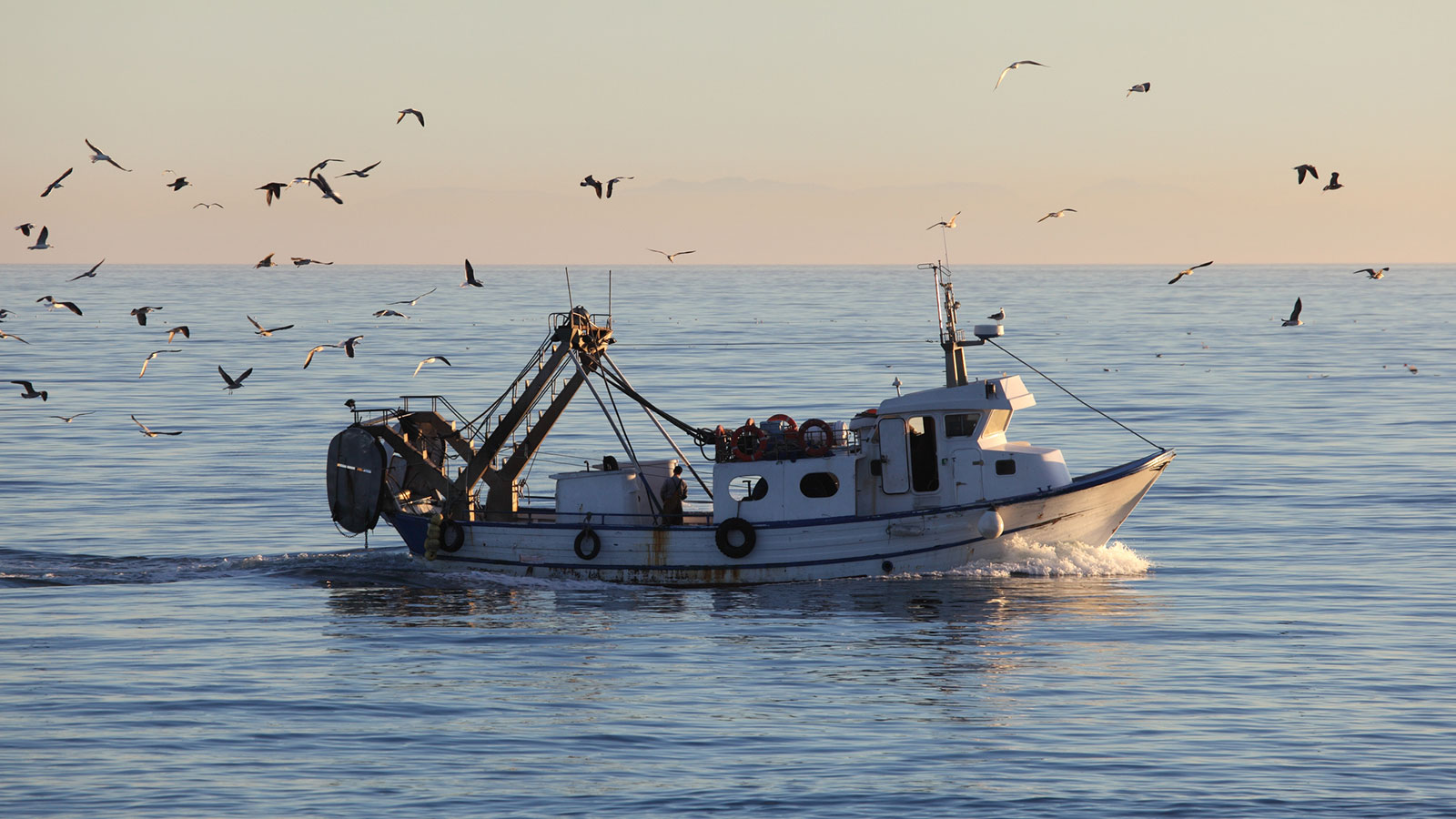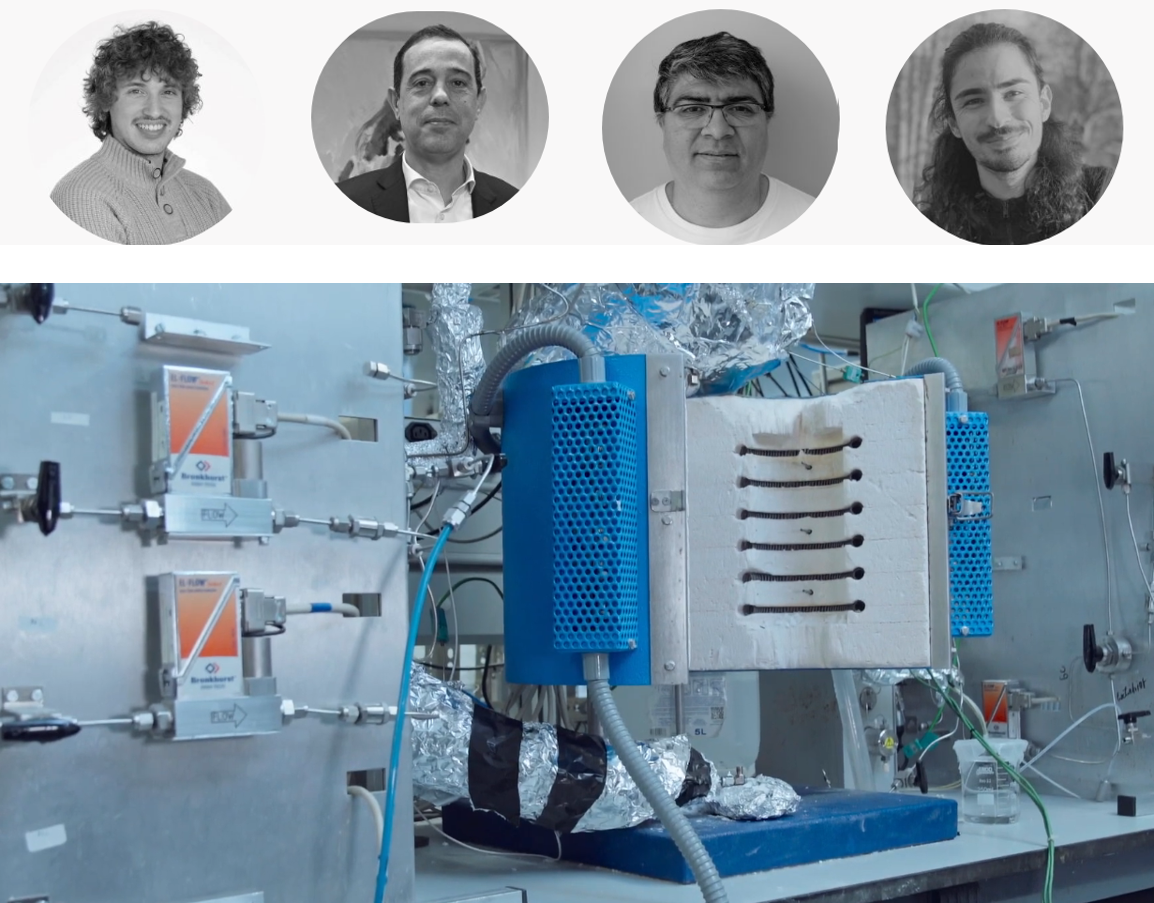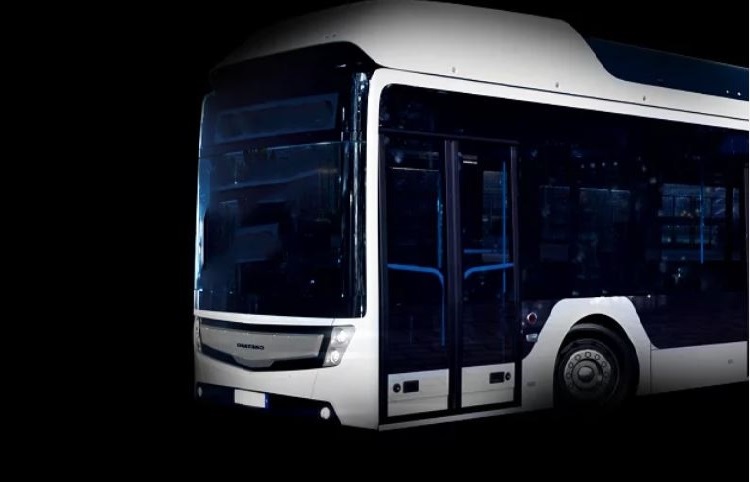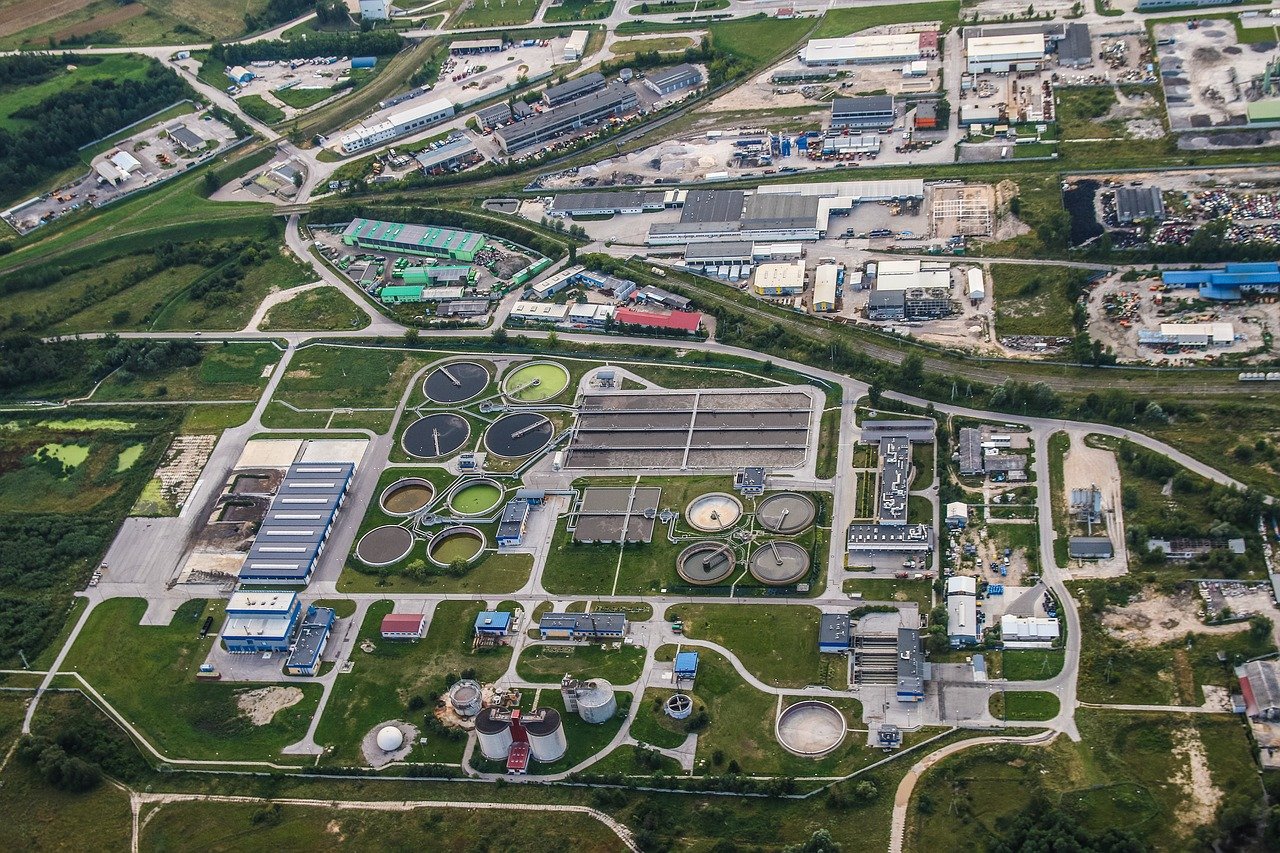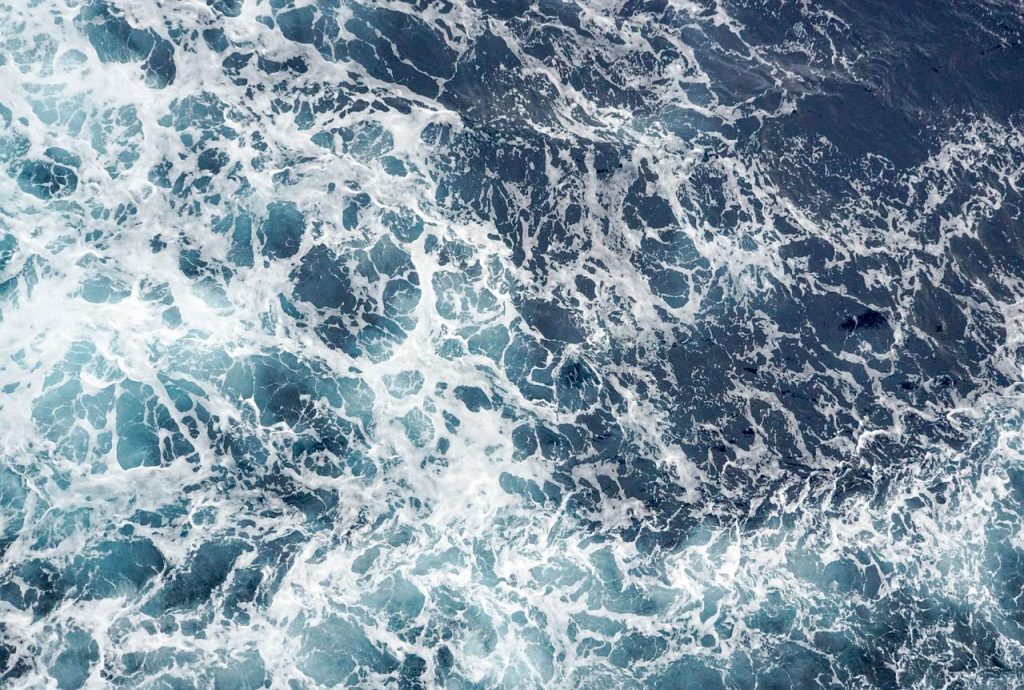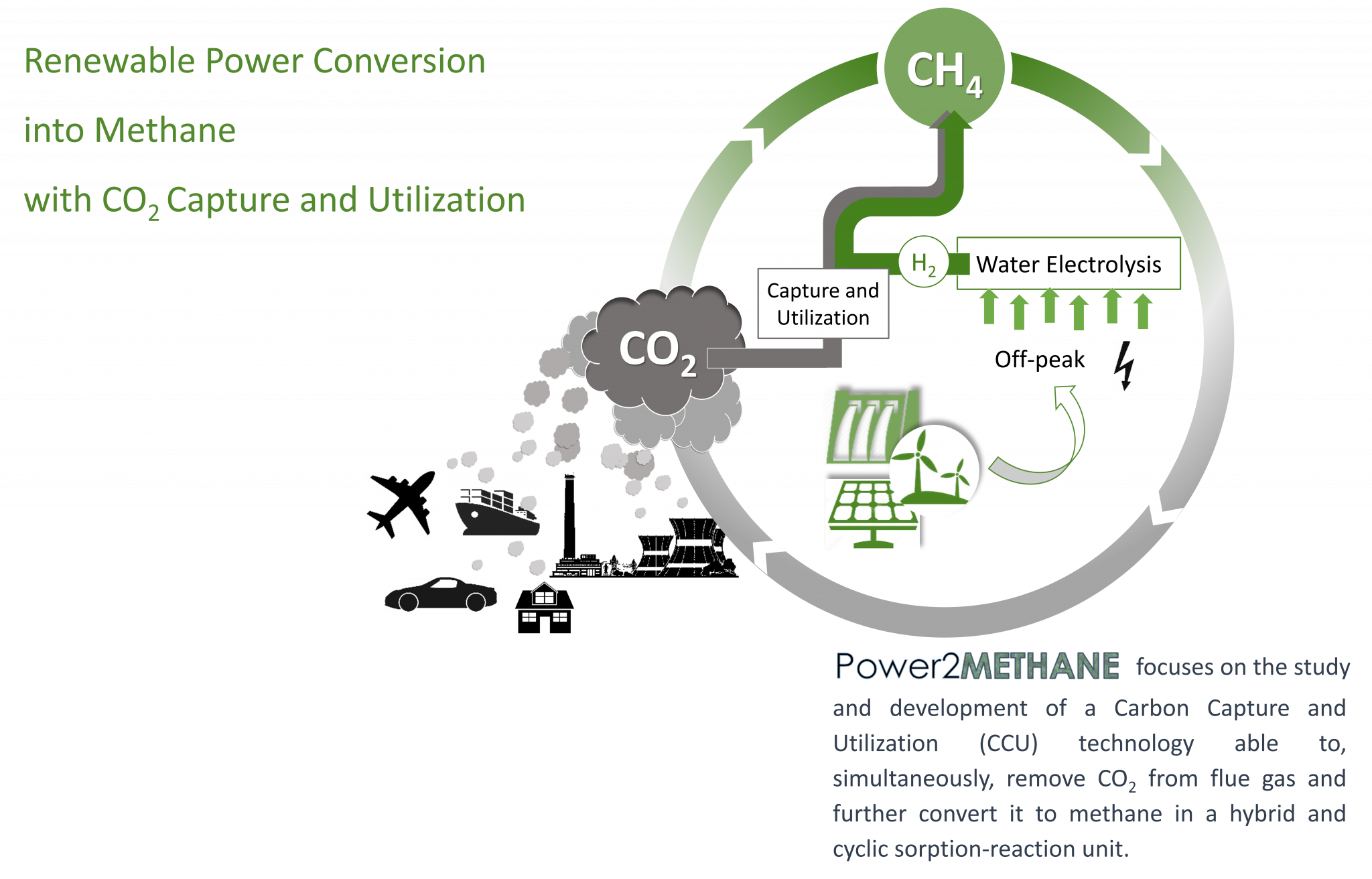Projects
Ongoing Projects
GREENSHIP_E - Eletrificação de navios com combustíveis ecológicos e tecnologias avançadas
- Project ref. : GreenSHip_E
- Proponents: CEFT/FEUP; LEPABE/FEUP; LSRE/FEUP; SYSTEC/FEUP; INESC-TEC/FEUP
- Duration: 01.01.2025 | -
- LAMURE members involved: 3
- The GREENSHIP_E project, promoted by the University of Porto and funded by the Calouste Gulbenkian Foundation, will develop a prototype for producing and storing hydrogen on board.
CYCON – Cyclic device for continuous CO2 capture and conversion into CH4
- Project ref. : CYCON
- Proponents: LEPABE/FEUP; LSRE/FEUP | Air Liquide
- Duration: 01.02.2024 | -
- LAMURE members involved: 6
- The #LEPABE project “CYCON – Cyclic device for continuous CO2 capture and conversion into CH4” emerged victorious in the 3rd edition of the Air Liquide Scientific Challenge 2023, under the theme “Energy storage using essential small molecules.” The three winners (the other two in different topics) were selected from a total of 119 applications originating from 29 countries, by a jury consisting of 8 members, all of whom play a significant role in the scientific and industrial community. The Air Liquide Scientific Prize, amounting to €50,000, was awarded to Professor Luís Miguel Madeira and his team, comprised of Dr. Miguel Soria, Dr. Cláudio Rocha, and Ph.D. student Joana Martins, during the award ceremony held on November 29th, near Versailles. In addition to this award, the development of this project will be fully financed by Air Liquide as part of a 3-4 year project aimed at advancing this innovative proposal and transforming it into market-ready technology.
HydroAzeite: valorizing wastewater from olive oil mills
- Project ref. : HydroAzeite
- Proponents: LEPABE/FEUP | Adventech
- Duration: 30.11.2023 | 31.07.2024
- Total budget:10.000,00 EUR
- LAMURE members involved: 4
The primary objective of BIP Proof is to create a proof-of-concept system that can contribute to the maturation of technology and its closer approach to the market.
The HydroAzeite project aims to “optimize and apply a multifunctional hybrid reactor that combines the wastewater reforming reaction and the simultaneous removal of CO2 (a byproduct of the reaction) in a single device through a CO2-selective adsorbent,” something never before achieved at an industrial level. According to the researchers, employing this method will bring numerous advantages to companies, and it may also generate a new source of revenue due to the production of the H2 biofuel.
Valorização de Resíduos de Destilarias em Energia Renovável
- Project ref. : DRI/India/0504/2020
- Proponents: LEPABE/FEUP | IIT Roorkee
- Duration: 28.08.2023 | 27.08.2026
- Total budget: 99.567,00 EUR
- LAMURE members involved: 3
A Índia e Portugal são exemplos de países com vários tipos de destilarias para produção de álcool e aguardente, as quais são uma das indústrias mais poluentes listadas por várias agências ambientais, como é o caso, por exemplo, da Central Pollution Control Board (CPCB), na Índia. A Índia é o segundo maior produtor de etanol da Ásia e, embora Portugal ainda seja deficiente em termos de produção de aguardente de vinho, podemos considerar que o país já tem algum peso no setor, principalmente quando comparado a outros países europeus com tradição em produção de aguardente vinícola, principalmente a Espanha. Cerca de 2 L e 8-15 L de águas residuais são geradas por cada litro de aguardente e álcool produzido em destilarias à base de vinho ou melaço, respetivamente. Esses efluentes têm, no entanto, carência química de oxigênio (CQO) e carência
bioquímica de oxigênio (CBO) extremamente altas (80 000 a 100 000 e 40 000 a 50 000 mg/L, respetivamente), além de um pH baixo, odor forte e cor castanha escura. Atualmente, a biometanação por digestão anaeróbica é usada como tratamento secundário na maioria das destilarias de modo a reduzir a carga poluente e produzir metano. No entanto, a biometanação por si é ineficiente, devido à presença de uma grande quantidade de polifenóis (ca. 6000 mg/L) e azoto amoniacal (135-480 mg/L), metais pesados e pesticidas, que tornam as águas residuais tóxicas para os microrganismos. Consequentemente, o efluente final não cumpre frequentemente os limites de descarga.
A valorização de efluentes industriais com degradação simultânea dos poluentes e produção de energia verde está recebendo elevada atenção, principalmente via reformação a vapor (RV) para produção de hidrogénio. Esta alternativa representa uma abordagem muito promissora para cumprir com algumas necessidades energéticas de forma sustentável, obtendo-se energia renovável e distribuída enquanto os resíduos, potencialmente nocivos, são mitigados. Nesse contexto, o hidrogénio aparece como uma alternativa particularmente interessante de combustível e energia “limpa” para o futuro. A estratégia aqui proposta é muito atrativa devido à grande capacidade de produção da RV, ampla experiência prévia com matérias-primas renováveis e o grau de maturidade da tecnologia. A carga orgânica remanescente nas águas residuais de destilarias após a RV irá ser tratada de modo a cumprirem-se os limites de descarga legislados. Para esse propósito, são propostos no WASTERNERGY dois tratamentos finais diferentes: os processos eletroquímico e de Fenton. Esta abordagem permite reduzir significativamente os custos quando comparado ao tratamento direto de águas residuais das destilarias, uma vez que o teor de poluentes é consideravelmente reduzido na RV.
As águas residuais das destilarias contêm 9 a 11% de sólidos e, consequentemente, é gerada lama sólida em grande quantidade devido às altas cargas de produção. Não existem abordagens eficazes para se gerir e utilizar a lama sólida gerada nas destilarias. A abordagem proposta no WASTENERGY é recuperar os resíduos sólidos das destilarias e valorizá-los através da preparação de catalisadores para serem empregues em processos de oxidação avançados (AOPs). Esta estratégia, que consiste na
reutilização de resíduos sólidos para tratar águas residuais da mesma atividade agroindustrial, está claramente alinhada com as tendências atuais da economia circular.
Esta proposta visa, portanto, produzir hidrogénio verde (H2) a partir de efluentes de destilarias, usando-se o processo de reformação catalítica. A poluição residual das águas residuais, após a RV, deve, ainda, ser minimizada pela hibridização de AOPs como o processo Fenton e eletroquímicos. A lama gerada será utilizado para a síntese de catalisador/biocarvão a ser utilizado nos processos anteriores. Finalmente, as águas residuais tratadas poderão ser recicladas para a própria destilaria. Esta estratégia não produz apenas energia renovável (na forma de H2), mas também faz das destilarias uma indústria de geração de resíduos nula, por reciclagem e reutilização das suas águas
residuais e lamas sólidas. Assim, o WASTENERGY aborda duas áreas de investigação prioritárias do concurso: energia e meio ambiente.
Para garantir o sucesso da tecnologia inovadora proposta, está envolvido um consórcio com experiência nos três principais domínios deste projeto, nomeadamente: a equipa do Instituto de Tecnologia da Índia de Roorkee, IIT Roorkee, com uma vasta experiência na preparação e caracterização de catalisadores e tratamento de águas residuais por técnicas eletroquímicas, e a equipa da FEUP, em Portugal, com amplo conhecimento em processos de reformação a vapor e processos oxidativos avançados. Além disso, empresas de ambos os países, SK UEM Water Projects Pvt. Ltd (Índia) e Advantech (Portugal), demonstraram um grande interesse na tecnologia e na abordagem proposta no WASTENERGY (cartas de apoio em anexo), garantindo assim a transferência de tecnologia nos dois países.
Past Projects
Combustíveis de Base Biológica
- Project ref. : POCI-01-0247-FEDER-046117
- Proponents: 18 Partner Institutions (Consortium)
- Duration: 28.10.2020 | 27.10.2023
- Total budget: 11 212 947,15 EUR (FEUP: 234 221,24 EUR)
- LAMURE members involved: 1
The main goal of the mobilizing project, MOVE2LOWC – Biologically Based Fuels, is the production of biofuel for the aviation and heavy road transport sector of goods and passengers.
This project intends to mobilize Universities, R&D Institutes, SMEs and Large Companies to cooperate with the goal of increasing the use of aquatic biomass (microalgae), residual forest biomass and industrial effluents for the production of biofuels, in a circular economy logic.
Sorption-Enhanced Membrane Reators using Monolith-Supported Catalysts for High-Purity Hydrogen Production
- Project ref. : PTDC/EQU-ERQ/098730/2008
- Proponents: FEUP
- Duration: 01.05.2010 | 31.10.2013
- Total budget: 154 000,00 EUR
Cost-effective Approaches for Mitigation of Risky Cytostatics in Portuguese Waters
- Project ref. : POCI-01-0145-FEDER-031297
- Proponents: FEUP (LEPABE)
- Duration: 26.07.2018 | 25.07.2022
- Total budget: 221 780,87 EUR
- LAMURE members involved: 1
Cytostatics, used in chemotherapy, are posing the environment at risk. Aware of the need to protect the environment and to prevent human health risks, CytoStraTech aims to reveal, for the first time, cost-effective treatment solutions to prevent their entrance and accumulation in the water cycle. This project will also bring knowledge on the contamination status of Portuguese waters resulting from risky cytostatics (never assessed before). The efficacy of different technologies will be evaluated, starting from the most common solution strategies, such as those based on tertiary treatment processes already implemented in some urban WWTPs, up to novel integrated approaches, which combine the concentration of risky cytostatics (by adsorption or membrane processes) and their subsequent degradation through advanced oxidation processes. The most promising technologies at bench-scale will be up-scaled and benchmarked, with the support of Adventech, a Portuguese company acting in this field.
LAunching New SILOxane Treatments: assessing effluent, sludge and air quality and improving biogas production in WWTPs
- Project ref. : POCI-01-0145-FEDER-032084
- Proponents: FEUP
- Duration: 01.07.2018 | 30.06.2022
- Total budget: 224 968,43 EUR
- LAMURE members involved: 3
Siloxanes are usually removed from the biogas stream, at the end of the sludge depuration process. Different techniques, such as adsorption, absorption, o catalytic attack are applyed to lower down the content of siloxanes. However, in modern day WWTPs some pitfalls are found regarding siloxanes analysis, fate, risk assessment, and removal:
There is not a unified protocol to sample and analyze siloxanes in the different WWTP media.
Few studies have been done to study the fate of siloxanes in WWTP.
Inhalation toxicity and subsequent risk assessment of siloxanes have not been performed so far.
No removal of siloxanes is performed in water or sludge, which could reduce the amount of these compounds in biogas and minimize the human exposure
To overcome the aforementioned challenges, the LANSILOT project propose the following solutions:
Conduct a series of seasonal sampling campaings to analyze the content of siloxanes in different matrixes (water, sludge, air, and biogas), as well as elaborate a mass balance on a WWTPs.
Perform in-vitro toxicological tests with lung cells exposed to different doses and combinations of siloxanes.
Design a technology coupling sludge aeration and an advance oxidation processes (AOPs) bubble column to improve the quality of obtained biogas.
Calculate the economic performance and the environmental impacts associated to our depuration technology and compare it wih state-of-the aret solutions.
Tackling Climate Change Impacts: the role of Green Hydrogen production, storage and use, together with low emissions energy systems
- Project ref. : NORTE-01-0145-FEDER-000077
- Proponents: FEUP (CEFT) | FEP
- Duration: 01.04.2021 | 31.03.2023
- Total budget: 588.143,10 EUR
- LAMURE members involved: 3
Renewable gases with particular emphasis on hydrogen, have been assumed as central in decarbonization strategies together with newer and better CO2 capture processes. With the target to effective mitigation of climate change impacts, a strategy must be built based on renewable energy sources, keeping also in mind the energy efficiency and the benefits for the energy consumer.
Therefore, this project has as main objectives the development and optimization of systems of Green Hydrogen production & storage, and CO2 capture and conversion (e.g. power to methane) technologies. Other strategies for mitigation and personal protection against climate change will be addressed in this project, namely to enhance the efficiency of combustion systems lowering emissions and to develop Thermal Protective Clothing to improve the safety of workers exposed to thermal stress environments, including firefighters.
Identification, Elimination, Social Awareness and Education of Water Chemical and Biological Micropollutants with Health and Environmental Implications
- Project ref. : NORTE-01-0145-FEDER-000069
- Proponents: FEUP (LSRE-LCM, LEPABE, CEFT) | FPCEUP
- Duration: 01.04.2021 | 31.03.2023
- Total budget: 479.658,75 EUR
- LAMURE members involved: 3
Our planet is facing new threats with the spread of pollutants in water bodies (oceans, seas, coastal and inland waters). Water is a highly sensitive natural resource and alternatives to analyse these pollutants and to minimize water contamination are required, aiming an enhanced quality of life in Northern Portugal, a societal challenge and an expected impact of the Structured R&D&I project “Healthy Waters”.
In this context, Healthy Waters aims to identify and prevent the occurrence of contaminants with health and environmental implications (emerging pollutants, antibiotic resistant bacteria and their associated antibiotic resistance genes, viruses and other relevant contaminants) in water that is currently treated as waste and that can be reused in sustainable food production. Specifically, the project aims to exploit the potentialities of the tailor-made smart design of materials and methodologies to identify micropollutants and compare ways for their elimination in waters and wastewaters by using oxidation/separation and bioremediation processes. The transfer of knowledge to the civil society (Citizen Science) is also considered in the project, so that citizens can identify where these pollutants exist in their daily routine and consumption habits, becoming not only aware of this theme, but soon being able to identify and discuss specific environmental problems in their community. This knowledge transfer will take place in the context of formal education (primary and secondary education, involving researchers, students and teachers), using a participatory research-action logic. The project is led by LSRE-LCM and with R&D Units from FEUP (LEPABE and CEFT) and FPCEUP (CIIE) is designed to IDENTIFY contaminants and RISKS (Activity 1) and ELIMINATE contaminants and VALORISE resources (Activity 2) while EDUCATING and promoting SOCIAL AWARENESS (Activity 3).Simultaneous Treatment of Gas and Liquid Effluents Containing Volatile Organic Compounds by Advanced Oxidation Processes
- Project ref. : POCI-01-0145-FEDER-029642
- Proponents: University of Porto (LEPABE | LSRE-LCM)
- Duration: 26.07.2018 | 25.07.2022
- Total budget: 238.758,48 EUR
- LAMURE members involved: 4
Volatile Organic Compounds (VOCs) are generated in several industrial activities, namely in the petrochemical sector, and are present in liquid and gaseous effluents. These compounds are toxic, mutagenic and carcinogenic. The VOCAdvanced project intends to make an important contribution to the removal of this type of pollutants and, consequently, to minimize the negative environmental impacts and preserve the public health.
The project aims at the simultaneous decontamination of gaseous and liquid effluents containing VOCs by advanced oxidation processes, namely homogenous and heterogeneous Fenton processes, using a bubbling column reactor.
Energetic Valorization and Treatment of Olive Oil Production Wastes
- Project ref. : NORTE-01-0247-FEDER-39789
- Proponents: ADVENTECH | LEPABE/FEUP
- Duration: 01.11.2019 | 31.10.2022
- Total budget: 464.675,64 EUR
- LAMURE members involved: 5
Development of equipment/technology aimed at the recovery of wastewater from the olive oil production and extraction industry for the production of “green” H2, thus allowing the proper management of these effluents and, consequently, the reduction of the environmental footprint associated with this agro-industrial sector. In order to achieve the objectives proposed in the VERPRAZ project, several activities will be carried out, including: i) optimization of the membrane distillation process, ii) optimization of hydrogen production by reforming, iii) recovery of solid waste and effluent treatment, iv) pilot scale tests , v) technical-economic analysis, vi) dissemination of results (promotion and dissemination) and vii) project management.
Renewable Power Conversion into Methane with CO2 Capture and Utilization
- Project ref. : POCI-01-0145-FEDER-030277
- Proponents: LEPABE/FEUP
- Duration: 01.06.2018 | 31.05.2022
- Total budget: 239.720,07 EUR
- LAMURE members involved: 4
Power2METHANE focuses on the study and development of a Carbon Capture and Utilization (CCU) technology able to, simultaneously, remove CO2 from flue gas and further convert it to methane in a hybrid and cyclic sorption-reaction unit.
